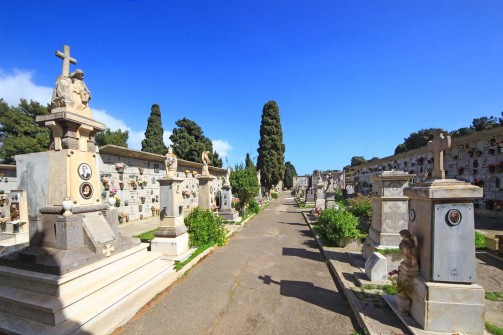The cemetery was built in 1913 in an area known as ‘Terr’e Mani,’ although the plan had been prepared since the second half of the 19th century to be built in an area outside the built-up area. The bodies, in fact, between the end of the nineteenth century and just beyond the first decade of the twentieth century, were still being interred in the area surrounding the parish church named after St. Peter the Apostle and, in particular, in its side part, to the right for those looking from the square toward the entrance gate. By 1911 the municipality of Pirri, then autonomous, had reached about 3,500 inhabitants, and the administrators of the time had to mobilize to bring it in line with the public health regulations of the Law of March 20, 1865, which had been disregarded for several decades, requiring a cemetery outside the inhabited part. The area to be used as the Cemetery was chosen a hundred meters from the church itself, but work began in 1912 and was completed in early 1913. The acceptance took place on July 23. The new cemetery in Pirri was consecrated the following November 8, 1913, by Archbishop Francesco Rossi of Cagliari, and the first to be buried there were ten babies. At the entrance to the cemetery, marked by a large arched portal, is the oldest part. Inside, as soon as you cross the threshold you will find the ossuary; on the left side there was a room, used as a mortuary, in the vicinity of which was the cemetery area designated for unbaptized babies. The room located on the right is currently occupied by the janitor. There are several valuable funerary monuments bearing the likenesses of the deceased or allegorical figures. The cemetery was expanded later for the needs of the increasing population.









